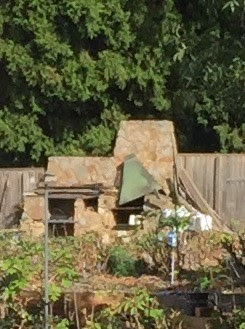The Abstract Sublime
Art Gallery of NSW
To February 17
Makeshift, Abstraction and the Australian Patina, Terri Brooks, excerpt PhD exegesis 2009.
'In Tuckson’s sketch book drawings[77] he reinvents the tradition of drawing with new perspectives and flattened fields. There is a merging of positive and negative space rendered in a spare lineal manner of simplification and reductionism. This influence undoubtedly stems from Tuckson’s visual observations of Indigenous art which carry the same values, but in Tuckson’s case the influence is synthesised rather than emulated.
Tuckson opted
for makeshift, or do-it-yourself, materials. In his studio stood an old easel
and ‘a sack curtain roughly stitched together by Tony’.[78]
Tuckson, Fairweather and indeed Olsen at times painted on newspaper.
Fairweather’s reasoning, ‘I ran out of other paper’, [79]
while Tuckson, who painted ten thousand works on paper,[80]
maybe just thought it expedient to ‘use what was at hand’. Similar reasoning of
necessity was employed by earlier settlers in the use of newspaper as a
substitute for wallpaper or the making of paper mâché baskets during the Great
Depression. My grandparents used newspaper for insulation, wrapping rubbish,
lining cupboard drawers and rolled up to catch insects in the vegetable garden.
No 35: Drawing, 1962, at first glace is
an interesting collage (Figure 26). It is also
makeshift. Tuckson has grabbed whatever was at hand rather than search for the
right or aesthetic piece of paper to use as you might find in more formal
collage.[81]
The cigarette packaging and newspaper strips are arranged unaesthetically, in a
kind of ‘any old how’ slap dash manner and bear no real regard for the
background. Visually, the continual repetition of the cigarette packaging
creates an aesthetic of poverty (due to choice of materials) and simplicity.
The very ordinariness of the collage materials combined with the almost unartful
charcoal lines allows the full expression of emotion, the driver, to be
absorbed.
Lyrical
abstraction, with its heavy emphasis on expressive gesture requires the use and
poise of the whole body; as such the surface of the canvas is the end product
of a kind of painting performance.[82]
Tuckson’s lyrical works from 1970–73, the works that set him apart, are direct,
hard hitting paintings imbued or bound by the artist’s sensibilities. They
traverse neither decorative nor narrative territory, which allows the work to
stay true to its emotional impetus. It is ‘one hit’ painting, ‘a home slog’, and
as such it is hard to beat. The beauty of this type of painting is that it hits
you again and again in the same fresh way every time you see it. Like
Fairweather, Tuckson’s work is convincing. Makeshift values are apparent in the
painterly decisions he made, his brush work and the materials he favoured.
Builders or ‘bush’ handyman materials were used. Cheap masonite sheeting (left
in its raw and flexible state) was preferred to canvas. House paints and house
painter’s brush and charcoal were used in equal preference to fine artist’s
materials. His loaded brush was delivered at full force in an open and direct
way without cosmetic fuss about how the paint landed on the canvas. Technique
was superfluous to ‘getting the job done’ as dribbles, drips and splashes were
incorporated into the composition. This created patina of Tuckson’s surface is
akin to the rough appearance of Lanceley’s Self
Portrait, or Gasgoine’s weathered found materials. His last works
capitalise the open field of the picture plain, at once recalling the wide open
space of the Australian landscape without rendering it, for Tuckson ‘everything
was space’[83]. Tuckson often described his brush work as up, down and across.[84]
You could not get a more simple, ‘down to earth’, honest or unartful arm
movement or interpretation of the rectangular painting surface. To emulate
Tuckson is to take a journey into a visual toughness that allows no fuss. His
paintings are as cultural Australian ‘makeshift’ as Pollock’s paintings are verisimilitudes
of the American Wild West. Tuckson’s sophistication lies in his lack of
contrived finesse. It was a choice to use hard-hitting non-decorative marks
aimed at purely expressive spiritual outcomes. This is different to the
Americans as it is more direct, open and economical, as if drawing at full
speed or intensity—one line could express everything.'
 |
| Tony Tuckson at the AGNSW (photo Jan Courtin). |
79. Ian Fairweather to T. Smith, (November 11,
1959) Bribie Island
80. Daniel Thomas et al., Tony
Tuckson, 9.
81. Ibor Holubizky, ‘Madonna
Staunton: sorting through…organising things, in time…through time’, in Madonna Staunton,
ed. Michael Snelling, 22, ‘the materials are very
much related in the act of collage’.
82. Robert S. Nelson and Richard Shiff, Critical Terms, for Art History, 2nd ed. (Chicago : University
of Chicago
84.
Ibid.




























